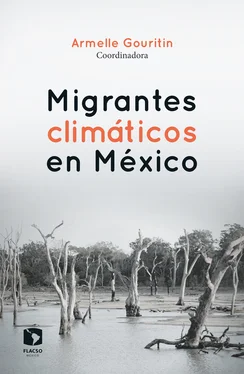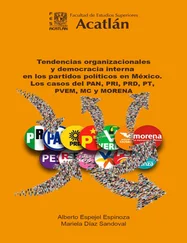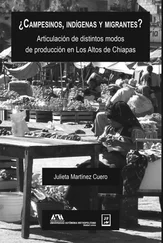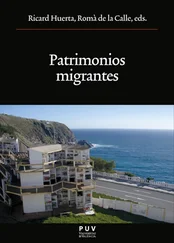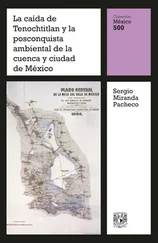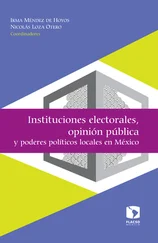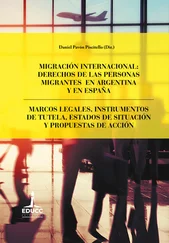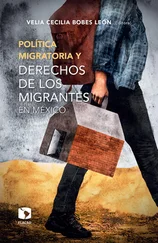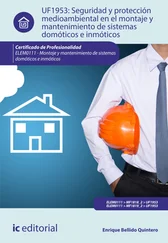Establecidas las definiciones y criterios que aplican y el ámbito de investigación, afinaremos más aún nuestro marco teórico y la matriz de análisis abordando la exigencia de protección y el eje territorial en el siguiente capítulo.
Abel, G. J., Brottrager, M., Cuaresma, J. C. y Muttarak, R. (2019). Climate, conflict and forced migration. Global Environmental Change , 54 , 239-249.
Ackerly, B. A. (2016). Hidden in plain sight: Social inequalities in the context of environmental change. En R. McLeman, J. Schade y T. Faist (Eds.), Environmental migration and social inequality (pp. 131-149). Nueva York: Springer.
Adams, H. y Kay, S. (2019). Migration as a human affair: Integrating individual stress thresholds into quantitative models of climate migration. Environmental science & policy , 93 , 129-138.
Adams, H. (2016). Why populations persist: mobility, place attachment and climate change. Population and Environment , 37 (4), 429-448.
Aremu, T. y Abraham, P. (2018). Herdsmen on the move: The burdens of climate change and environmental migration in Nigeria. En W. Leal Filho (Ed.), Handbook of climate change resilience (pp. 1-11). Nueva York: Springer.
Assaduzzaman, M., Filatova, T., Coenen, F. y Lovett, J. (2020). Freedom of choice to migrate: adaptation to climate change in Bangladesh. International Journal of Sustainable Development & World Ecology , 27(7), 1-10.
Ayeb-Karlsson, S., Smith, C. D. y Kniveton, D. (2018). A discursive review of the textual use of ‘trapped’ in environmental migration studies: The conceptual birth and troubled teenage years of trapped populations. Ambio , 47 (5), 557-573.
Barutciski, M. (1998). Tensions between the refugee concept and the IDP debate. Forced Migration Review , 3 , 11-14.
Bates, D. C. (2002). Environmental refugees? Classifying human migrations caused by environmental change. Population and environment , 23 (5), 465-477.
Becker, S. O. y Ferrara, A. (2019). Consequences of forced migration: A survey of recent findings. Labour Economics , 59 , 1-16.
Bettini, G. y Andersson, E. (2014). Sand waves and human tides: exploring environmental myths on desertification and climate-induced migration. The Journal of Environment & Development , 23 (1), 160-185.
Birkenholtz, T. (2012). Network political ecology: Method and theory in climate change vulnerability and adaptation research. Progress in Human Geography , 36 (3), 295-315.
Black, R. (2001). Environmental refugees: myth or reality? unhcr.
Black, R. y Collyer, M. (2014). Poblaciones “atrapadas” en épocas de crisis. Revista Migraciones Forzadas , (45), 52-55
Black, R., Kniveton, D. y Schmidt-Verkerk, K. (2011). Migration and climate change: towards an integrated assessment of sensitivity. Environment and Planning A , 43 (2), 431-450.
Bobes, V. C. (2017). Política migratoria en México: legislación, imaginarios y actores . México: Flacso México.
Bose, P. y Lunstrum, E. (2014). Introduction environmentally induced displacement and forced migration. Refuge: Canada’s Journal on Refugees , 29 (2), 5-10.
Carr, D. (2009). Population and deforestation: why rural migration matters. Progress in Human Geography , 33 (3), 355-378.
Castles, S. (2002). Environmental change and forced migration: making sense of the debate . unhcr.
Centro Nacional de Prevención de Desastres (Cenapred). (2020). Visualización de Datos. Sistema de Consulta de Declaratorias 2000-2020. Atlas Nacional de Riesgos de la República Mexicana . http://www.atlasnacionalderiesgos.gob.mx/archivo/visualizacion-datos.html
Céspedes-Flores, S. E. y Moreno-Sánchez, E. (2010). Estimación del valor de la pérdida de recurso forestal y su relación con la reforestación en las entidades federativas de México. I nvestigación Ambiental , 2 (2), 5-13.
Clark, N. y Bettini, G. (2017). ‘Floods’ of migrants, flows of care: Between climate displacement and global care chains. The Sociological Review , 65 (2_suppl), 36-54.
Cohen, R. (2003). Sovereignty as responsibility: The guiding principles on internal displacement . (Unpublished presentation held at Jadavpur University, 5). https://www.brookings.edu/wp-content/uploads/2016/06/20031205.pdf
Cohen, I. S., Spring, Ú. O., Padilla, G. D., Paredes, J. C., Inzunza Ibarra, M. A., López, R. L. y Díaz, J. V. (2013). Forced migration, climate change, mitigation and adaptive policies in Mexico: some functional relationships. International Migration , 51 (4), 53-72.
Comisión para el Diálogo con los Pueblos Indígenas (cdpi). (s/f). Conflictos Indígenas. https://cutt.ly/wbDo3Oy
Comisión Interamericana de Derechos Humanos (cidh). (2013). Derechos humanos de los migrantes y otras personas en el contexto de la movilidad humana en México . (OEA/Ser.L/V/II. Doc 48/13). https://cutt.ly/KbDo2NV
Constitución Política de los Estados Unidos Mexicanos (cpeum). (2020). Última reforma. Diario Oficial de la Nación , 8 de mayo de 2020. http://www.diputados.gob.mx/LeyesBiblio/pdf_mov/Constitucion_Politica.pdf
Corte Interamericana de Derechos Humanos (Corte IDH). (2020). Caso Comunidades Indígenas Miembros de la Asociación Lhaka Honhat (Nuestra Tierra) vs. Argentina . Fondo, Reparaciones y Costas. Sentencia de 6 de febrero de 2020. Serie C No. 400.
Cournil, C. (2010). Les défis du droit international pour protéger les «réfugiés climatiques»: réflexions sur les pistes actuellement proposées. En C. Cournil y C. Colard-Fabregoule, Changements climatiques et défis du droit (pp. 345-372). Bruselas: Bruylant.
Derani, C. y Ribeiro Vieira, L. (2016). Displaced by development: Analysis on the implications of the principle of permanent sovereignty over natural resources. Veredas do Direito , 13 , 89.
Domínguez, J. C. (2014). Desplazamiento forzado por proyectos de desarrollo: retos para la cooperación internacional en América Latina . México: Instituto Mora.
Dun, O. V. y Gemenne, F. (2008). Defining ‘environmental migration’. Forced Migration Review , (31), 10-11.
Durand-Delacre, D., Farbotko, C., Fröhlich, C. y Boas, I. (2020). Climate migration: what the research shows is very different from the alarmist headlines . Londres: The Conversation Trust. https://cutt.ly/ubDo1Bq
Duyck, S. y Gouritin, A. (2018). The road from Paris to sustainable development. Integrating human rights and gender equality into EU external policies . https://eu.boell.org/sites/default/files/visu15june.pdf
Erdal, M. B. y Oeppen, C. (2018). Forced to leave? The discursive and analytical significance of describing migration as forced and voluntary. Journal of Ethnic and Migration Studies , 44 (6), 981-998.
Facultad Latinoamericana de Ciencias Sociales, Sede México (Flacso México) y De Montfort University. (2019). Proyecto Conversando con Goliat. Resultados Principales Base de Datos Hemerográficos, Boletín de prensa. https://conversingwithgoli.wixsite.com/misitio/publicaciones-y-resultados
Ferris, E. (2011). Climate change and internal displacement: a contribution to the discussion . Brookings-Bern Project on Internal Displacement February 2011. Prepared for UNHCR Roundtable Bellagio, 22-26 de febrero. https://cutt.ly/7bDoVCR
Freeman, L. (2017). Environmental change, migration, and conflict in Africa: a critical examination of the interconnections. The Journal of Environment & Development , 26 (4), 351-374.
Читать дальше
